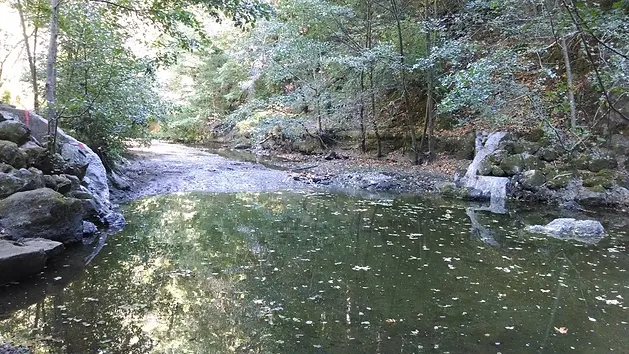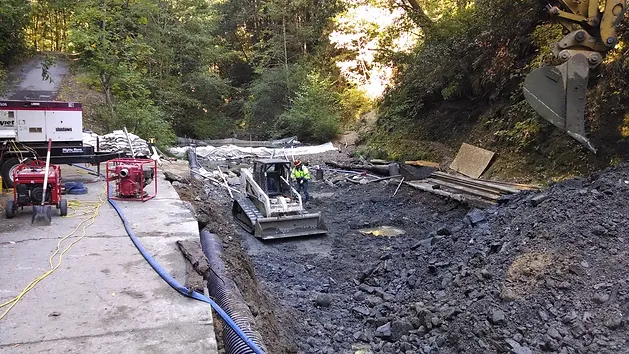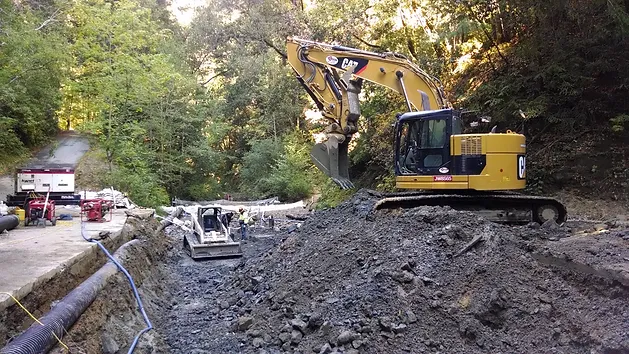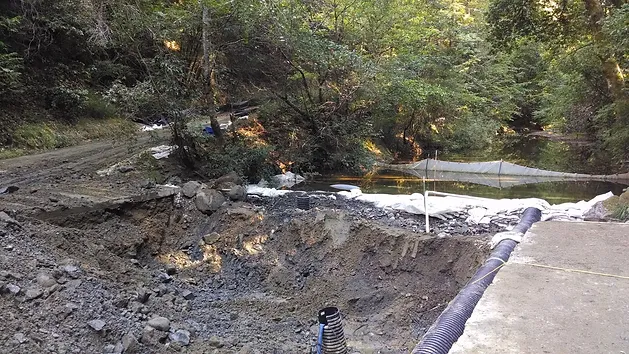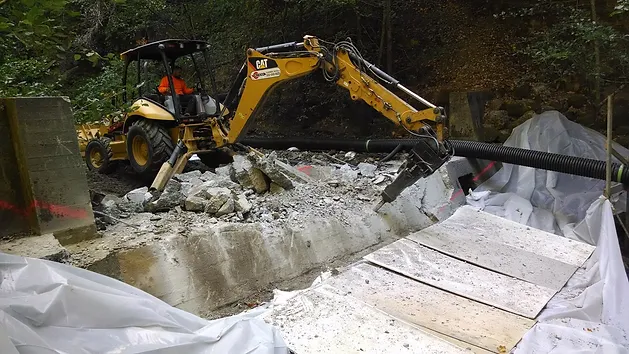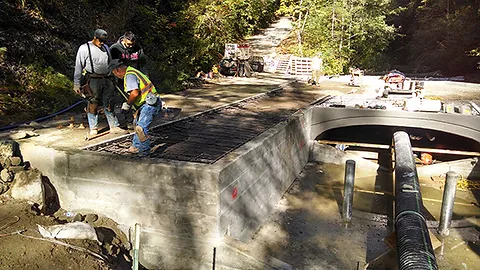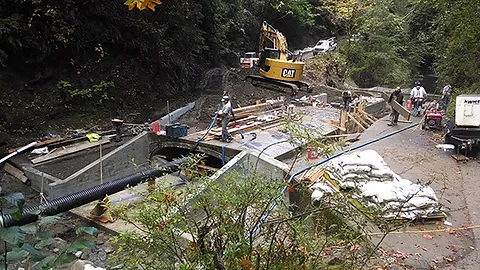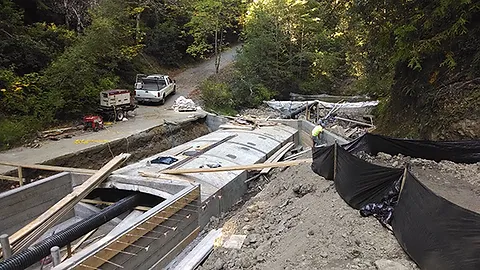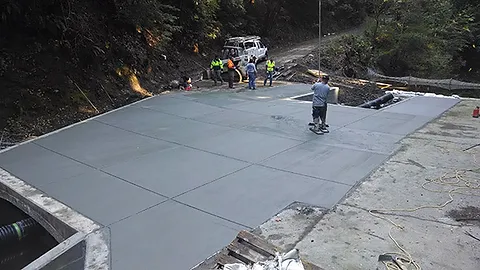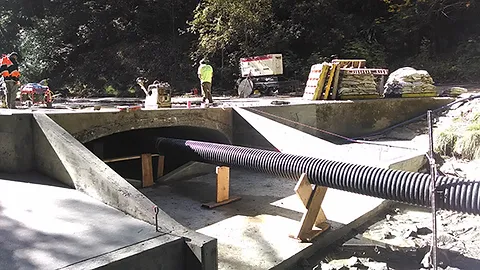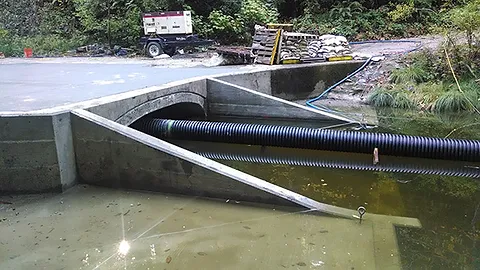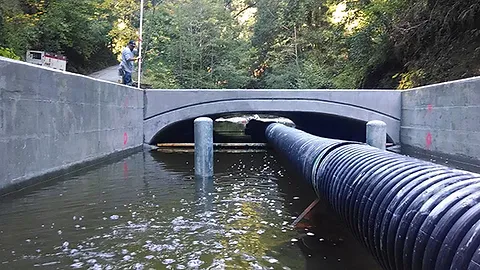Memorial County Park Fish Passage Barriers Remediation Project
Project Lead: San Mateo RCD
Video: http://www.sanmateorcd.org/project/memorial-park-fish-passage/
Location of Project: 37.16’26928, -122.17311
Description of Project: This project will modify the two remaining barriers to fish passage on Pescadero Creek to improve migration conditions for all life stages of coho and steelhead. Implementation will provide vastly improved passage for juveniles, allow unfettered access for adults, and facilitate more natural geomorphic processes upstream and downstream of the existing structures – potentially creating improved local rearing conditions as well.
Description of why this barrier is a high priority project: Historically, Pescadero watershed supported runs of steelhead and coho salmon. Both coho salmon (Oncorhynchus kisutch) and steelhead trout (Oncorhynchus mykiss) were historically present in Pescadero Creek, but these species have experienced substantial population declines over the past century. While steelhead are still found, with the exception of a few juvenile coho observed in 1999, coho are believed to be nearly extirpated from the system. In 2003, 17,000 hatchery-raised coho smolts were released into Pescadero Creek but adult coho have only been observed at a few locations over the past decade. Populations are federally listed as endangered or threatened under the federal Endangered Species Act. The Central California Coast evolutionary significant unit includes San Mateo County and was among one of the first in which both coho and steelhead were listed. Pescadero is the only independent watershed (from a coho recovery perspective) in San Mateo County. This means recovery of coho here is inextricably linked to successful recovery in this watershed. All actions supporting recovery including timely passage to spawning grounds and movement of juveniles is all that much more critical. And, of course, steelhead will enjoy immediate benefits when these barriers are addressed both in the short and long term.
The name(s) of the recovery plans and the specific task that name this barrier as a high priority:
- Recovery Strategy for California Coho Salmon (DFG 2004) – Task: SM-HU-08 Restore coho salmon passage to coho salmon habitat using the prioritized list.
- National Marine Fisheries Service (NMFS), 2012, Final Central California Coast Coho Salmon Recovery Plan: Appendix F-Pescadero Creek Watershed, Santa Rosa, California.
- IWRP, 2009, List of IWRP TAC Priority Projects for San Mateo, Santa Cruz, and Monterey Counties, Compiled by Kellyx Nelson, Jim Robins, and Paul Robins.
- CEMAR, 2008, Steelhead/Rainbow Trout Resources of San Mateo County. Prepared for the California Coastal Conservancy.
- Sustainable Conservation, 2006, Barriers to Anadromous Fish Passage in Coastal San Mateo County Streams, California Coastal Conservancy. San Francisco, California
This project will help to address these California Fish Passage Forum objectives.: Remediate barriers to effective fish migration.
Anadromous fish species that will benefit from project: Coho salmon, steelhead/rainbowtrout
Location and distance in stream miles to downstream river structures, and whether each structure represents an insignificant, partial, or total barrier to fish passage: The PAD database lists 18 downstream barriers, however, none of these represent barriers to fish passage on the mainstem of the Pescadero below the two sites proposed for remediation in this project.
Location and distance in stream miles to upstream river structures, and whether each structure represents an insignificant, partial or total barrier to fish passage: The PAD database lists 2 barriers upstream of the sites proposed for remediation.
How will the project be evaluated and measured for success: Project evaluation includes project documentation including redlines and/or as-built documentation of the work completed and photo documentation of the barriers before, during and after construction. Post-construction we will photo document the sites during the Winter 2015-2016 to show performance at different flow regimes. We will also monitor site restoration and revegetation success.

